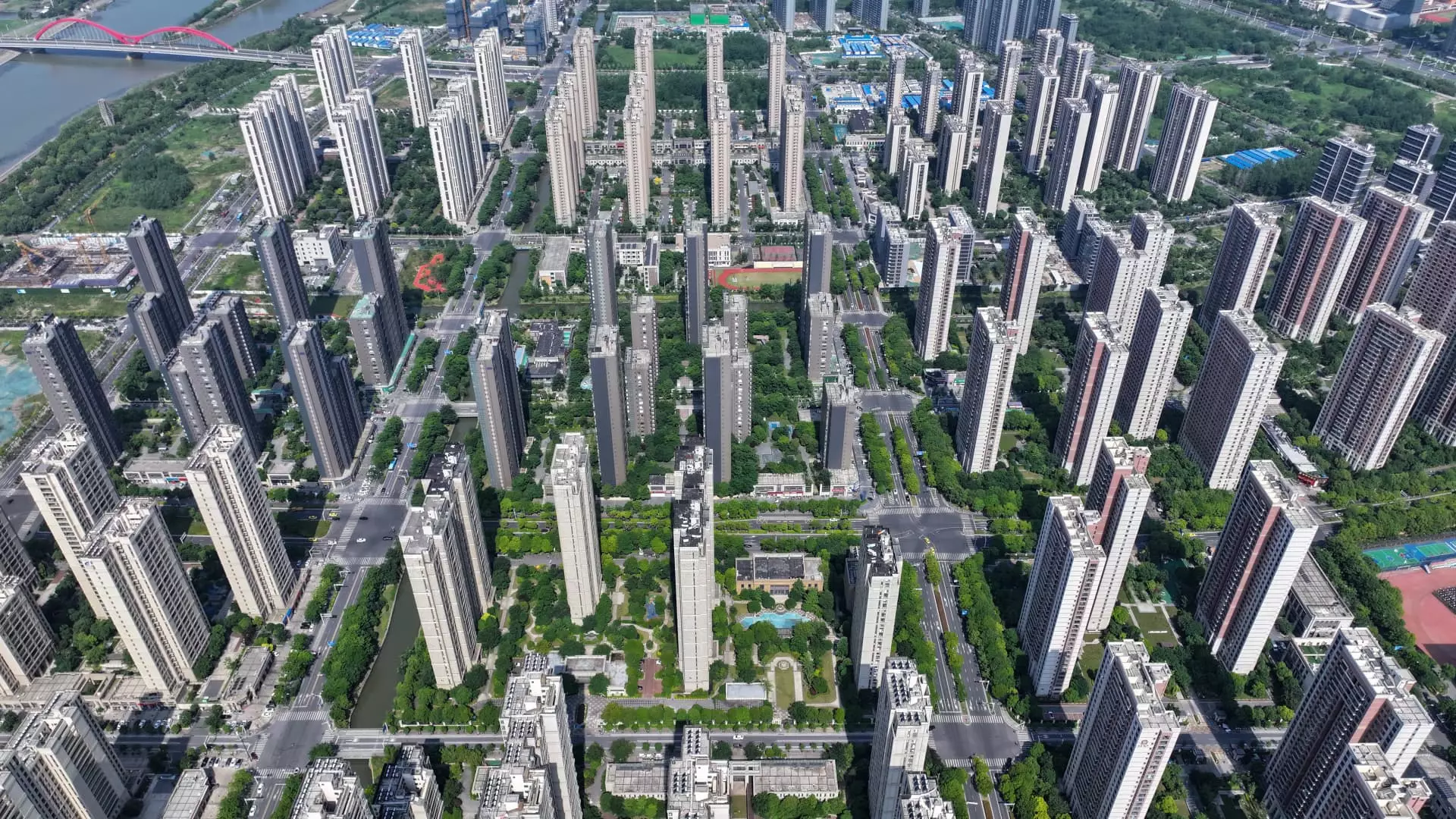The landscape of Hong Kong-listed Chinese property stocks has experienced a remarkable upswing, reaching heights not seen in over a year. The Hang Seng Index revealed a substantial turnaround, primarily driven by the real estate sector, which has emerged as the foremost gainer. Notably, Longfor Group Holdings led the charge, achieving a staggering 25% increase in share value. Other developers such as Shimao Group and Kaisa Group also witnessed meteoric rises of 87% and around 40% respectively, marking their highest values in more than a year. This resurgence suggests that investor confidence is being bolstered, albeit momentarily, by a wave of stimulus measures and policy adjustments from the Chinese government aimed at revitalizing this crucial sector.
In a bid to enhance homeowner confidence and invigorate the sluggish market, several major cities across mainland China have initiated new easing measures. For instance, the city of Guangzhou has abolished all restrictions on home purchases effective immediately, while Shanghai has shortened the required tax-paying period for property buyers. Moreover, Shenzhen has relaxed purchasing restrictions, enabling buyers to acquire an additional apartment in select districts. These governmental measures reflect a concerted effort to mend the frayed fabric of the real estate market and encourage potential investors or homebuyers who have been sitting on the sidelines.
Despite these positive movements, analysts remain skeptical about the long-term viability of this market resurgence. Morgan Stanley highlighted a significant concern—the persistent drag from the property sector could lead to considerable shortfalls in demand, resulting in growth remaining below projections. This cautionary perspective is underscored by the fact that real estate previously accounted for over 25% of China’s GDP, and has since seen a steady decline since 2020, primarily due to Beijing’s stringent measures aimed at curbing excessive debt levels within the industry. Although the government has increased its support to mitigate financial stress on households and stabilize the faltering real estate market, these interventions have yet to yield the desired substantial improvements.
While the recent gains in the property sector reflect an optimistic moment, they cannot overshadow the foundational issues still looming on the horizon. The combination of ongoing financial strain on households and the controversial prior policies has left the real estate market in a precarious condition. It is crucial for stakeholders to recognize that rapid price recovery and a revival of buyer interest will likely require more than just fleeting stimuli. The unfolding narrative remains complex, with the necessity for enduring structural reforms to create a resilient and sustainable property market. Whether this rally signifies the beginning of a genuine turnaround or merely an ephemeral spike remains to be seen as we approach a critical juncture in China’s real estate development.

